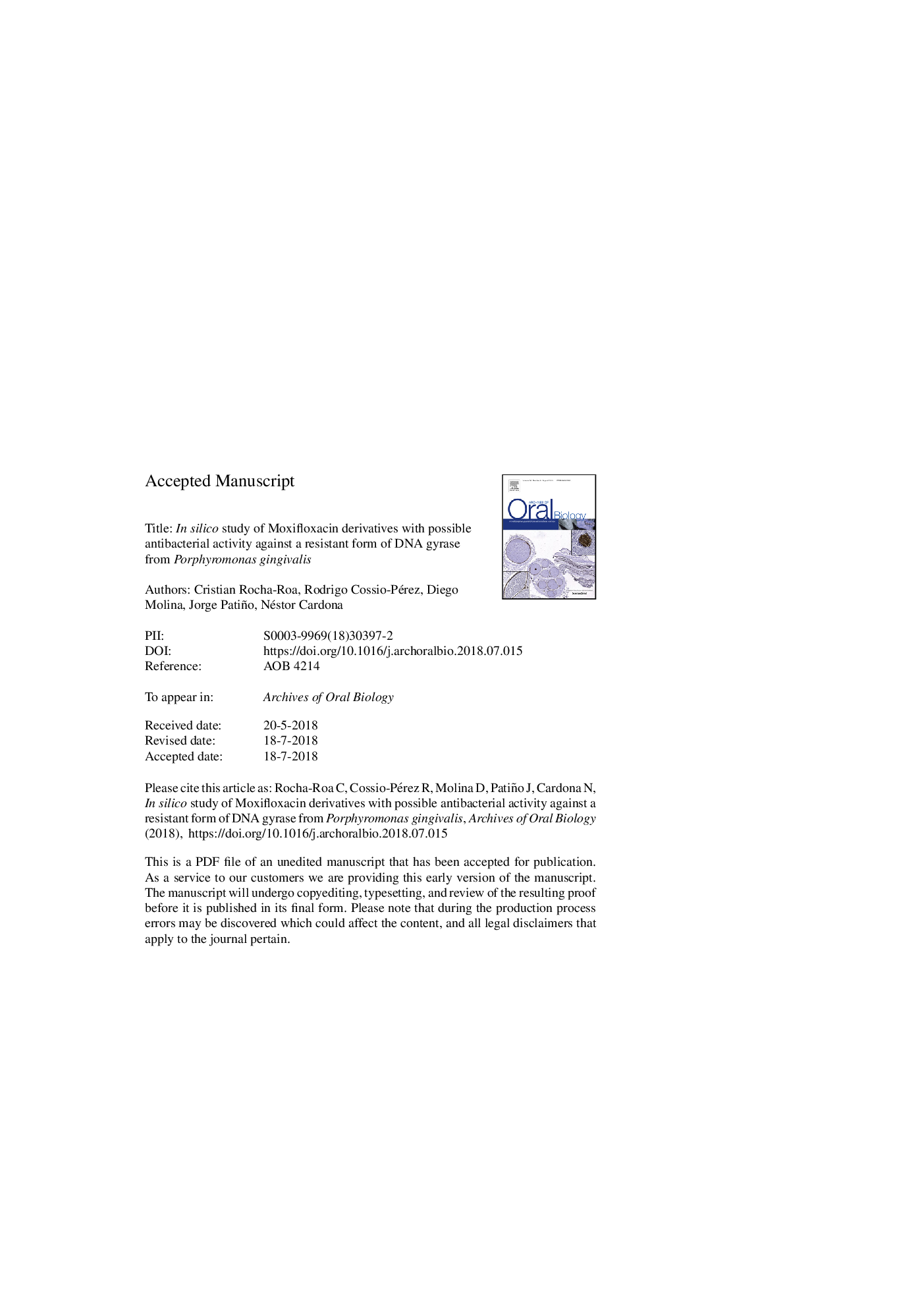| Article ID | Journal | Published Year | Pages | File Type |
|---|---|---|---|---|
| 8696355 | Archives of Oral Biology | 2018 | 30 Pages |
Abstract
We performed a homology modeling of the structure of a non-mutated and mutated Ser83âPhe DNA gyrase of Porphyromonas gingivalis. The model presented structural features conserved in type II topoisomerase proteins. We designed and evaluated in silico structural modifications to the core of Moxifloxacin by molecular docking, predicted toxicity and steered molecular dynamics simulations (SMD). Our results suggest that 8D derivative of Moxifloxacin could present a strong inhibitory activity in Porphyromonas gingivalis bacteria that exhibits resistance to some conventional fluoroquinolone drugs. Also, our results suggest that hydrophobic radicals in the hydroxyl group at position 3 of the quinolone core would increase the antibacterial activity of the compound when a reported mutation Ser83âPhe is present in the DNA gyrase protein. In addition, new candidates that could have a higher antibacterial activity compared to Moxifloxacin in non-resistant bacteria are proposed.
Keywords
Related Topics
Health Sciences
Medicine and Dentistry
Dentistry, Oral Surgery and Medicine
Authors
Cristian Rocha-Roa, Rodrigo Cossio-Pérez, Diego Molina, Jorge Patiño, Néstor Cardona,
